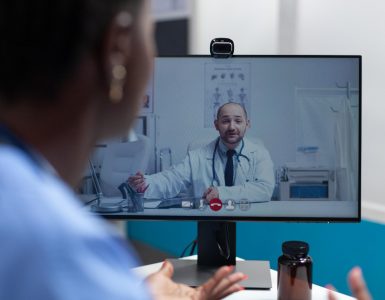Health marketing’s cultural closeup
Pharmaceutical companies, broadly speaking, have not done an acceptable job including Black and Brown people in ads or other marketing programs. But amid widespread social unrest and a subsequent focus on the scourge of health inequity, marketers seem finally to have adjusted to the times.
“We are seeing a lot more action taken, specifically from health brands,” says Walter Geer III, executive creative director within VMLY&R’s health practice. “We’re seeing more people want to market to a broader spectrum of folks.”
Now, when Geer brings culturally informed strategies and insights to pharma work targeting people of color, the response is vastly different. “There’s no pushback,” he notes. “Whereas a year ago, we might have gotten resistance.”
Indeed, it’s almost impossible to rebut reality any longer: People of color have a high prevalence of many chronic diseases, but have been underrepresented in the very communications necessary to drive diagnoses and stimulate demand for those treatments.
“When you see the numbers, which are as clear as day on paper, about who this impacts, why you need to go out to them and why this makes sense for the brand, it’s a no-brainer,” Geer continues.
Yet until the events of the past year – notably the COVID-19 pandemic, which exposed broad fault lines in the health system, and the killing of George Floyd, which sparked an equity and social justice tidal wave, many people weren’t willing to acknowledge those facts.
“It took those two unfortunate events for the country to pay attention to the outcomes, the disparities and the gaps in access to care that were already happening B.C. [before COVID],” observes Lili Gil Valletta, CEO and founder of the agency Cien+, which works at the intersection of culture and health. The higher death rates and disproportionate hospitalization rates seen among people of color – not to mention the impact on the economy and social tensions – “all happened to be amplified at the same time and in a way that we could no longer ignore,” she says.
And because those trends are too big and profound to ignore, it’s no longer business as usual for pharma. Gil Valletta notes that top pharma companies, payers, agencies and retailers are now “putting on hyperdrive the little things they were doing before. Where multicultural was a marginal investment, it’s now part of the mainstream conversation.”
As the industry finally unpacks what it truly means to market multiculturally, it is discovering a fundamental difference between multicultural marketing and marketing to a multicultural nation. DE&I is now perceived less as a program than as a mindset, one which calls for a new way of investing, planning and strategizing for the future.
Consider Genentech, which this month committed to spend a billion dollars with suppliers that are diverse – meaning more than 51% of the company must either be owned by a woman, a veteran or an individual from the LGBTQ, disability, Black, Hispanic, Asian or Native American communities. The commitment is part of a three-pronged strategic plan in which the company vowed to advance inclusivity research and health equity and to double the number of Black and Hispanic directors and officers in leadership positions by 2025.
“We’re saying that we’re going to put our money where our mouth is,” explains Quita Highsmith, Genentech’s chief diversity officer. As the company invites suppliers into its ecosystem, she adds that Genentech wants “to influence others to drive change.”
Any ad agencies or other suppliers working on RFPs of at least $500,000 will need to attest that they have in place their own system of accountability around achieving DE&I commitments. Agencies will be asked about the awards they have won, the composition of their boards and the diversity of the individuals likely to work on the Genentech business.
Other pharma companies are pursuing comparable policies and efforts. Johnson & Johnson and Bristol Myers Squibb dedicated $100 million and $300 million, respectively to their DE&I efforts, while Merck has similarly upped its commitments.
Given that some of these corporations are going beyond human resources and corporate social responsibility (CSR) in those efforts is “fundamentally different,” Gil Valletta says. “It’s more intentional and complete than I have ever seen in two decades of being in this business.”
As agencies like hers work with pharma and other healthcare organizations to embed inclusion into the way they design interventions and serve communities, Gil Valletta is seeing a new willingness to engage with nontraditional partners, such as the faith-based community. “Whereas in the past, there was a hesitancy to do so, now we’re realizing the need to reimagine who we team up with to influence certain communities from the bottom up,” she explains.
A good example is the Ad Council’s “It’s Up to You,” a COVID-19 vaccination education campaign which launched in February and for which Cien+ was tapped to build coalitions with church leaders. The campaign, entailing more than $500 million in donated media and talent, focuses on the vaccine-hesitant, especially in the Hispanic and Black communities, and ties together multiple partners. One of these partners, the National Faith Steering Committee, has more than 20 influential faith leaders to weigh in on any and all issues
“What we’re recognizing now is that, even with the best intentions, those healthcare institutions that typically are not trusted by diverse communities may not be the best messenger,” Gil Valletta says. “We may need to step back and be the funders and backers of the message, and have somebody else be the messenger.”
In other words, as the Ad Council work shows, medical marketers must graduate from trying to be the “tip of the spear” on messaging to becoming the convener of unlike parties that sit around its table. “We can humbly recognize that you influence people one community at a time, and not always by blasting a top-down, amazing, heart-wrenching spot,” Gil Valletta adds.Walter Geer III, executive creative director within VMYL&R’s health practice, says healthcare marketers are finally adjusting to the times and marketing to a broader spectrum of people.
Of course, there remains a huge need for culturally relevant advertising and storytelling. But even if a brand wants to be more culturally sensitive, the dearth of clinical data on diverse populations has proven a limiting factor.
In oncology trials, for instance, there remains a profound need for racial equality. “Many trials across multiple tumor types don’t report the racial mix of patients, and when they do it’s sometimes incomplete,” said Dr. Sommer Bazuro, chief medical officer across FCB Health Network’s U.S. and E.U. offices, on a recent episode of The MM+M Podcast. “For those that do report on race, research showed Black and Hispanic patients were not included to match or even come close to the incidence of the tumor types in those patient populations.”
Because patient demographics in the trial data weren’t always aligned to true disease incidence across racial groups, Bazuro noted that ”this would limit us as an agency in terms of how we can represent patients in ads.” And that’s not to mention how such disparity prevents many potential trial subjects from ever finding out about studies that, especially in the cancer area, can prove life-extending.
FCB Health Network recently launched a campaign, dubbed Trial for #ClinicalEquality, to raise awareness about the lack of access to trials, as well as restrictive trial inclusion criteria and recruitment policies. The effort, which debuted in February on World Cancer Day, uses striking black-and-white photography and representative patients (although not real ones) in ads that ran pro bono in major publications.
COVID brought the issue even further into the limelight, as vaccine makers Pfizer/BioNTech and Moderna saw their own trial recruitment challenged by lack of diversity. An effort driven by the National Black Church Initiative helped change that – evincing another way the industry has found a way around mistrust in diverse communities.
SARS-CoV-2 virus over-indexes in Black and Brown communities, so calls for overrepresentation for people of color in the trials made sense. And while the studies didn’t include that overrepresentation, they did achieve greater diversity than many previous trials.
That R&D accomplishment has helped kick-start conversations about the disconnect between trial diversity and disease incidence at the brand level in multiple therapeutic categories. “Advocacy organizations and agencies are saying of the COVID trials, ‘Well, that’s proof-of-concept – it’s possible,’” explains Wallye Holloway, associate managing partner at TBWAWorldHealth. “Is that something that you solve for overnight? The fact that pharma is leaning in from that aspect is really encouraging.”
The enhanced awareness is filtering down to client counsel, even among brands that don’t warrant an all-out multicultural marketing blitz. It’s newly visible in communication tactics which resonate with broader patient populations as well as the healthcare practitioners treating them.
“At the very minimum, we should be asking, ‘Does this particular strategy cross to all populations and communities, or is this focused in on one kind of patient population?’” Holloway continues. On the professional side, she adds, “It’s really important for pharma and agencies that represent them to say, ‘How can we set up our HCPs for success as they’re navigating conversations with patients of color?’”
Healthcare agency Grey is working on a series of internal checklists to assist creatives – especially those who aren’t from a non-dominant community – before work is circulated. “They’re reminders for you to consider those people that you are portraying and how you’re portraying them,” says Ron Lewis, a group creative director in Grey’s health and wellness division.
Another way marketing has felt the mainstreaming of multiculturalism is the brighter spotlight trained on the lack of diverse talent. “DE&I blew up at our agency. It went from a small committee to being mentioned at our Monday morning meetings,” said Drucilla Brown, integrated producer, Concentric Health Experience, on The MM+M Podcast.
Brown, who joined the agency after graduating from a historically Black university, says her group was the most diverse department at her firm when she arrived. Furthermore, she notes that all her managers have been either people of color or women.
“It was a very different experience than I would have thought coming into corporate America,” she said during the podcast interview. She added, however, that “most of the other departments lack more diversity,” as does the leadership suite. Brown is doing her part, helping recruit other HBCU students into CHX’s internship program.
Lewis – who, along with Geer, launched a hiring-resource site called diversecreatives.com – notes that “there are not a lot of creatives of color sitting on these teams coming up with the ideas.” Having people of color in leadership is certainly important, he explains, because it lets the next generation see that “they can get to that point.”
But there needs to be more attention paid to the entry level. “Whatever excuses that were given for why there are not more creatives of color in leadership positions, you cannot give me any of those excuses for why there aren’t more at the entry level. Anybody out of a college program, in this industry, learns the entire job on the job,” Lewis continues.
By most accounts, the pace of change has been slow. BIPOC representation in the advertising industry (34%) lags the national average (41%), according to 2020 data from the Bureau of Labor Statistics, while leadership teams are more than 80% white male.
There does appear to be momentum toward the hiring of more creative professionals who look like the communities they’re trying to serve. Firms and brand teams are also endeavoring to instill a speak-up culture to prevent culturally insensitive campaigns from ever seeing the light of day.
“We are ensuring that we have diverse representation at the table when we have these conversations, when we’re pitching business and when we’re doing the work,” Geer says.
As people on both the client and agency sides give health marketing its much-needed cultural reality check, they’re finding that brands are more receptive to the need to reach diverse audiences in an authentic manner. For instance, Lewis has seen greater efforts in commercials to not only include more people of color, but to give them a starring role.
That has carried over to the realm of social media. Adakveo, the Novartis sickle-cell brand, launched a TikTok dance challenge last year with entertainer and advocate Stephen “tWitch” Boss and artist and producer C.P. Dubb, as part of its “Do U” campaign developed with the sickle cell disease (SCD) patient community.
Since the campaign’s launch, Adakveo.com has seen a sustained 11-fold increase in traffic. The effort has reached more than 44.2 million users with more than 300 user-generated videos featuring the #DoUChallenge hashtag, according to Frederike Podevin, executive director, U.S. marketing for Adakveo.
“Ninety-five percent of the comments show a highly positive sentiment, and the campaign received a lot of support from the SCD community when it came to focusing on SCD in a different light, which recognizes and celebrates patients’ strength and resilience,” Podevin writes in response to emailed questions.
In addition, Adakveo was among several that paused paid ads on Facebook and Instagram in August in support of the #StopHateForProfit campaign. The pause, on two of the social campaign’s most instrumental channels, was motivated by a desire to be “respectful and supportive of the needs of the community,” Podevin notes.
SCD is a disease that mostly affects African Americans, but the desire to speak in an authentic voice to a wider variety of patients is carrying over to other brands and chronic conditions that don’t necessarily have a disproportionate impact on non-dominant communities. The efforts are very much works in progress, however. For instance, diseases like eczema present differently on Black skin, which could potentially lead to mis- or under-diagnosis. But there is an underrepresentation of people of color in eczema drug ads that’s disproportional to the diverse population of patients living with these conditions, one recent study found.
“Advertisers, brands and agencies that represent them are starting to recognize that and say, ‘Okay, it doesn’t over-index in a Black population, but we also need to have these patients front and center,’” Holloway observes.
As for what comes next, marketers say they’ll continue to leverage the attention on social justice and equity to overcome barriers to better multicultural marketing. Lewis hopes to see that people of color aren’t simply “off to the side as dressing” in commercials, which in his mind would signify that “the brand is willing to lead with a person of color to represent what they’re selling and their business.”
An end to clichéd portrayals would be nice, as well. When people of color are featured in commercials, Lewis says, they’re often portrayed in the form of athletes, performers or other stereotypes, rather than in roles that show they’re just like other people.
“I want to see people of color uplifted, and [some of] these commercials just keep playing into these old tropes,” he laments.
Following Floyd’s death, many brands got slammed for multicultural pitches that were clumsy at best and offensive at worst. Lewis, however, is willing to cut them some slack. “Kudos to them for trying,” he says. “Everybody’s not doing it perfectly. It’s okay to not be perfect. It’s the effort that matters.” As more people of color are hired to work on health-related campaigns, he adds, “You’re going to get more insight and perspective.”
Geer, for his part, hopes that the receptivity for such work doesn’t fade with the next news cycle. “Be honest: A lot of the brands saying they want to do more right now is about, ‘If we do this type of work, then we look good,’” he says.
Still, Geer notes. “We’re doing the right thing when it matters. I’d like to say, ‘OK, well, great. Let’s see this same energy a year from now, two years from now.’ That’ll be the test.”
The post Health marketing’s cultural closeup appeared first on MM+M – Medical Marketing and Media.










